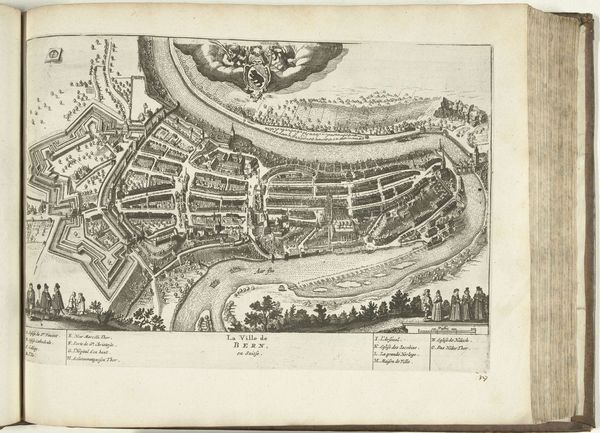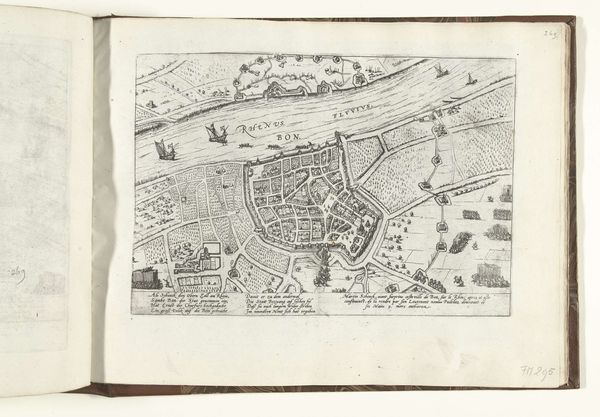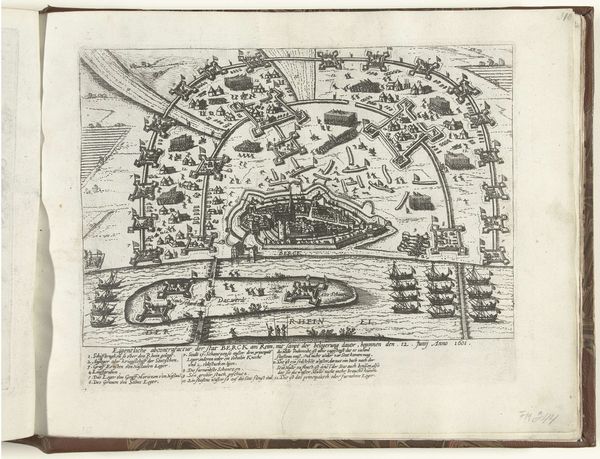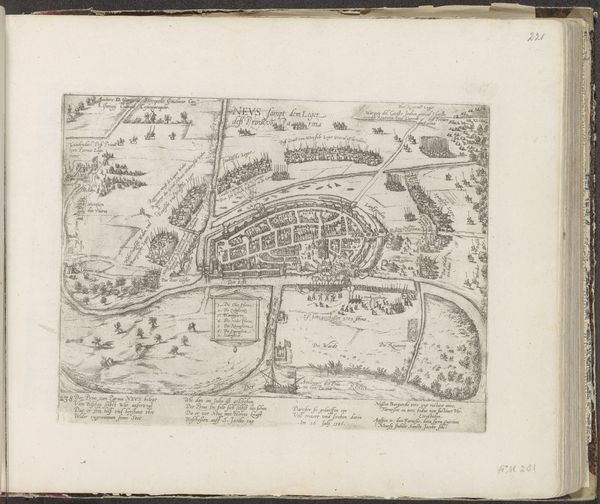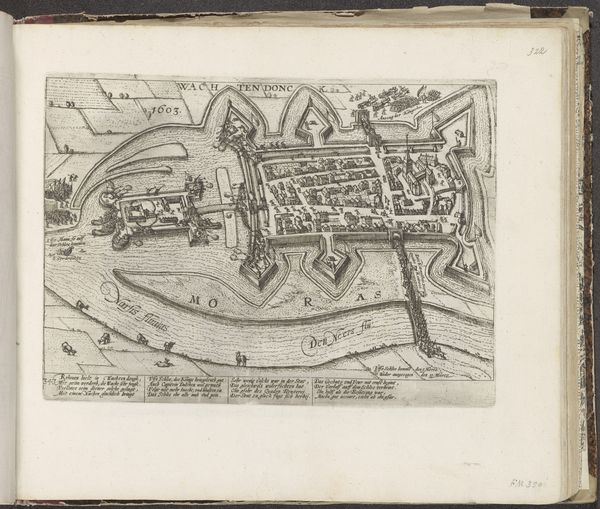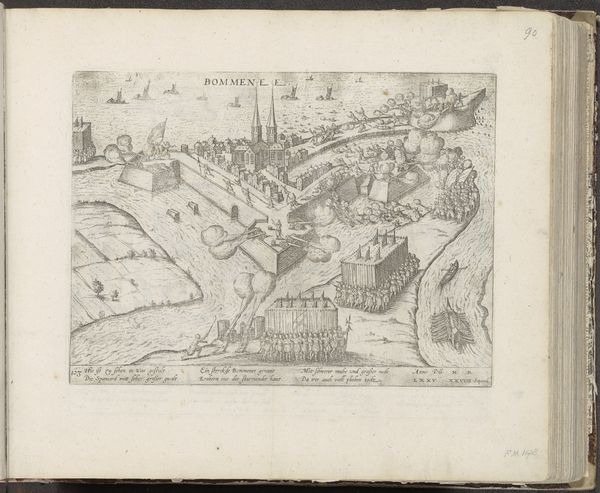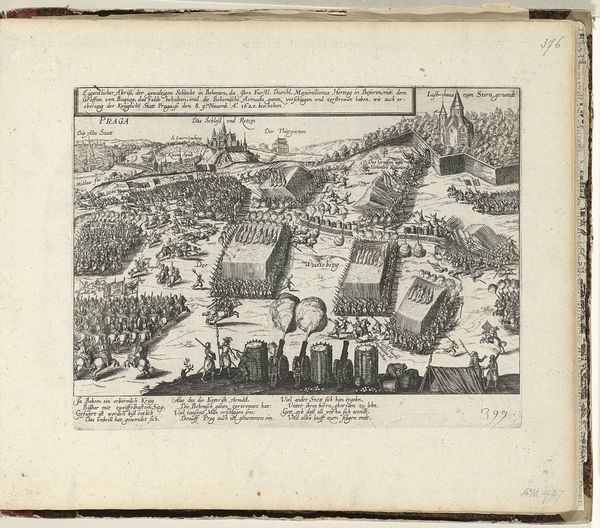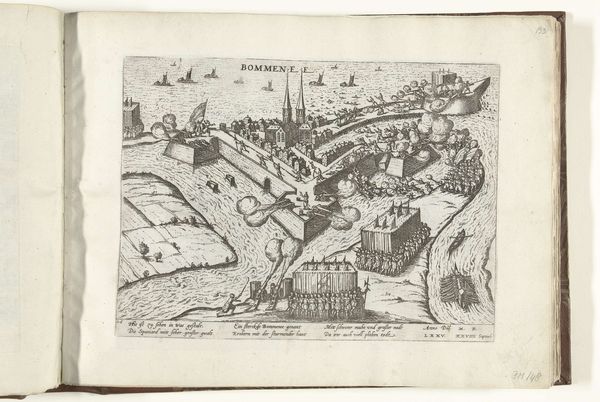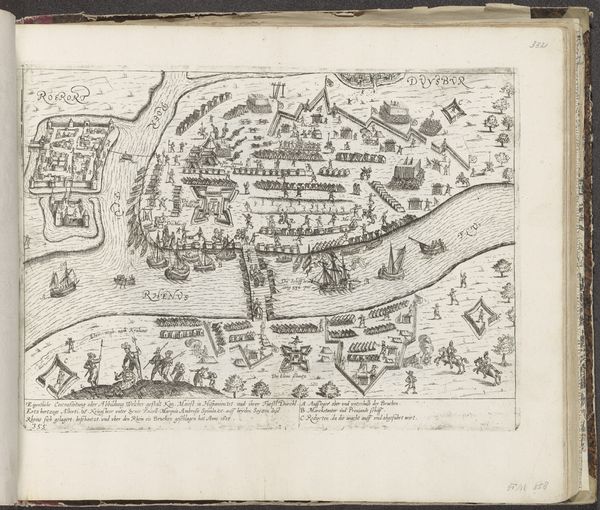
print, etching, engraving
# print
#
etching
#
landscape
#
perspective
#
line
#
cityscape
#
history-painting
#
northern-renaissance
#
engraving
Dimensions: height 210 mm, width 280 mm
Copyright: Rijks Museum: Open Domain
Curator: Immediately, I'm struck by the almost obsessive detail—each rooftop, each soldier meticulously rendered. Editor: This is “Eindhoven belegerd en ingenomen, 1583,” or “Eindhoven Besieged and Captured, 1583.” It's a print –an etching and engraving really– by Frans Hogenberg. It offers a bird's-eye perspective of the siege. Curator: It’s fascinating how this combination of etching and engraving allowed for such fine lines, lending the image an almost photographic quality despite being hand-produced. The density of the lines creates depth and texture, especially when considering the tools, labour, and paper stock available to Hogenberg at the time. It almost makes you feel the tension. Editor: The level of detail serves a clear historical purpose. This wasn't just aesthetic; these prints served as documentation. Consider their audience. City leaders, military strategists… they all needed accurate representations of sieges and urban layouts. Look at the way Hogenberg highlights the fortifications, strategically important buildings, and the positioning of troops. It’s propaganda, in a sense. Curator: Propaganda perhaps, but powerfully dependent on craft! The very act of printing, the repetitive gestures of engraving, allowed this viewpoint to be circulated and reinforced across political and geographic spaces. This single image contains the physical and ideological seeds of its reproduction, allowing for multiple interpretations and adaptations by diverse makers and users. Editor: Absolutely. These images helped construct a shared narrative of the Dutch Revolt. The act of capturing Eindhoven was significant and communicating its fall—or even overstating its impact—had a tangible impact on morale and future funding. What's even more compelling to me is understanding where these prints were displayed and how their accessibility shaped public perception. Did they instill fear, or pride, or maybe a bit of both? Curator: It all connects back to production. How were they made? How were they disseminated? Were they affordable, accessible objects or rarefied commodities? These questions can inform how these maps played a part in shifting material culture towards the more widespread sharing of strategic, territorial information across different social groups. Editor: A lot to consider then in one small, diligently worked image! It's remarkable how Hogenberg’s perspective gives a wide-angled vista of the town in that time. It speaks volumes about this moment in the history of Eindhoven, its role in the Netherlands and the relationship between socio-political history and visual culture. Curator: Agreed, looking at the material processes involved allows one to understand how even simple-seeming items, like paper images, acted within a much bigger historical and economical ecosystem.
Comments
No comments
Be the first to comment and join the conversation on the ultimate creative platform.
